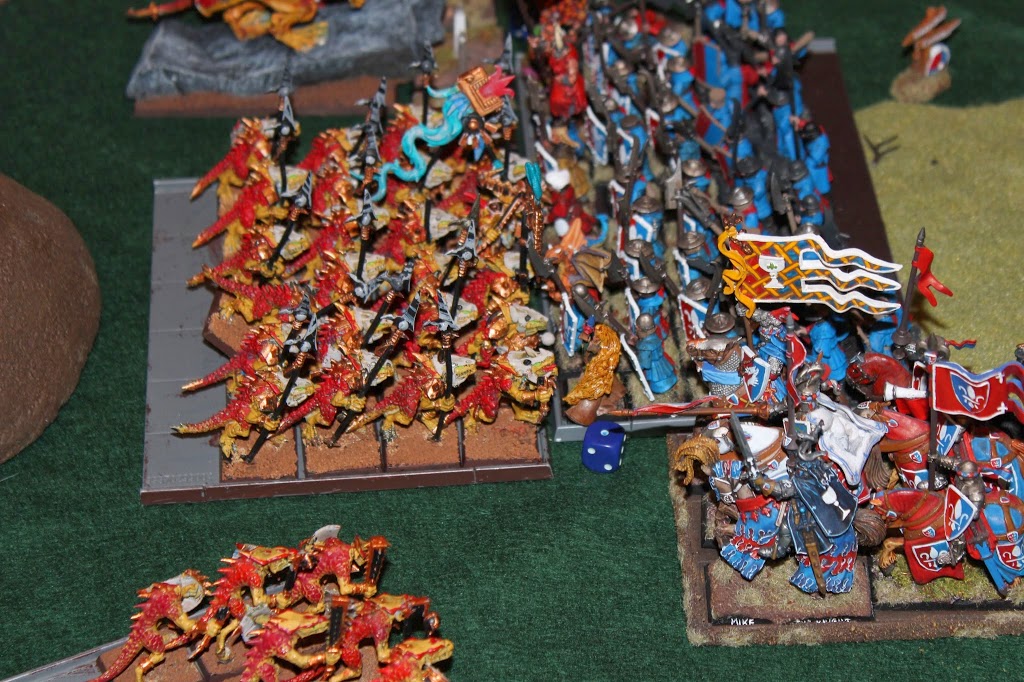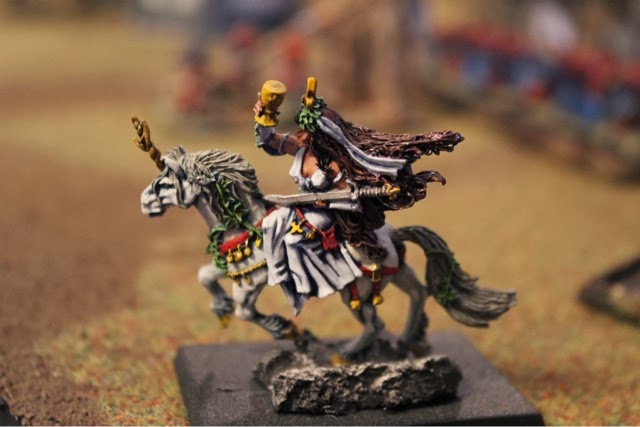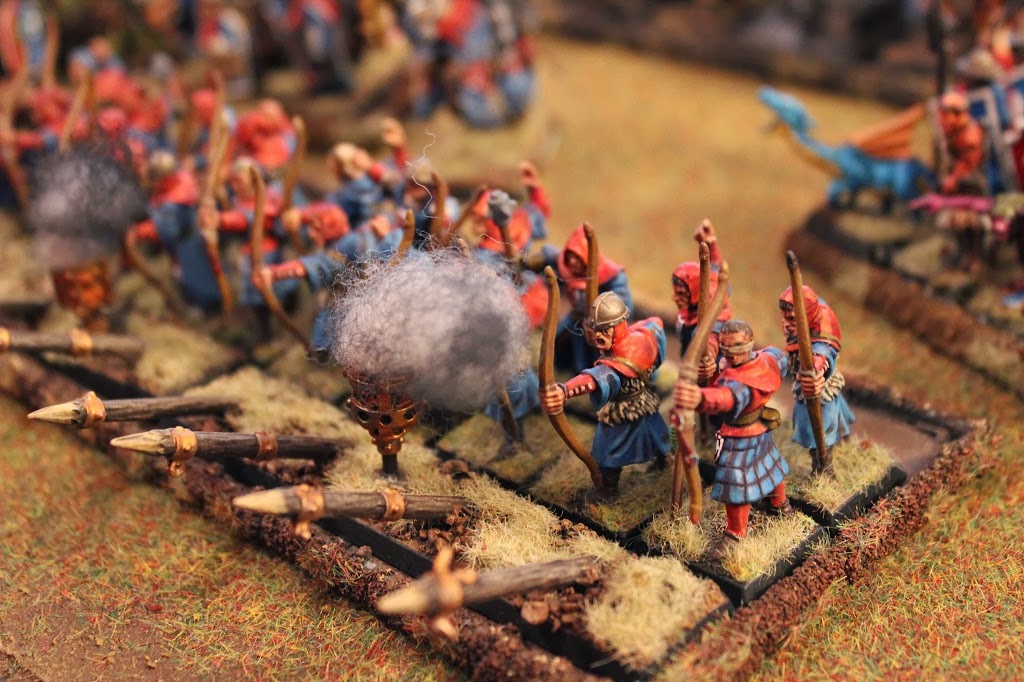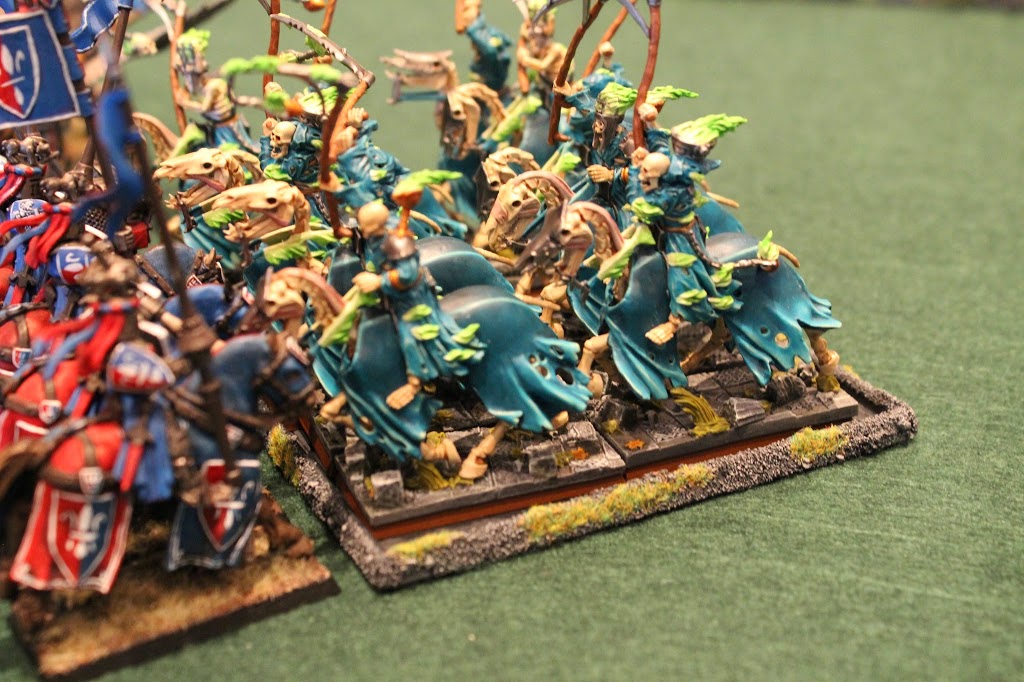WFB: It’s Time to Play – Part 6: Turn Sequence
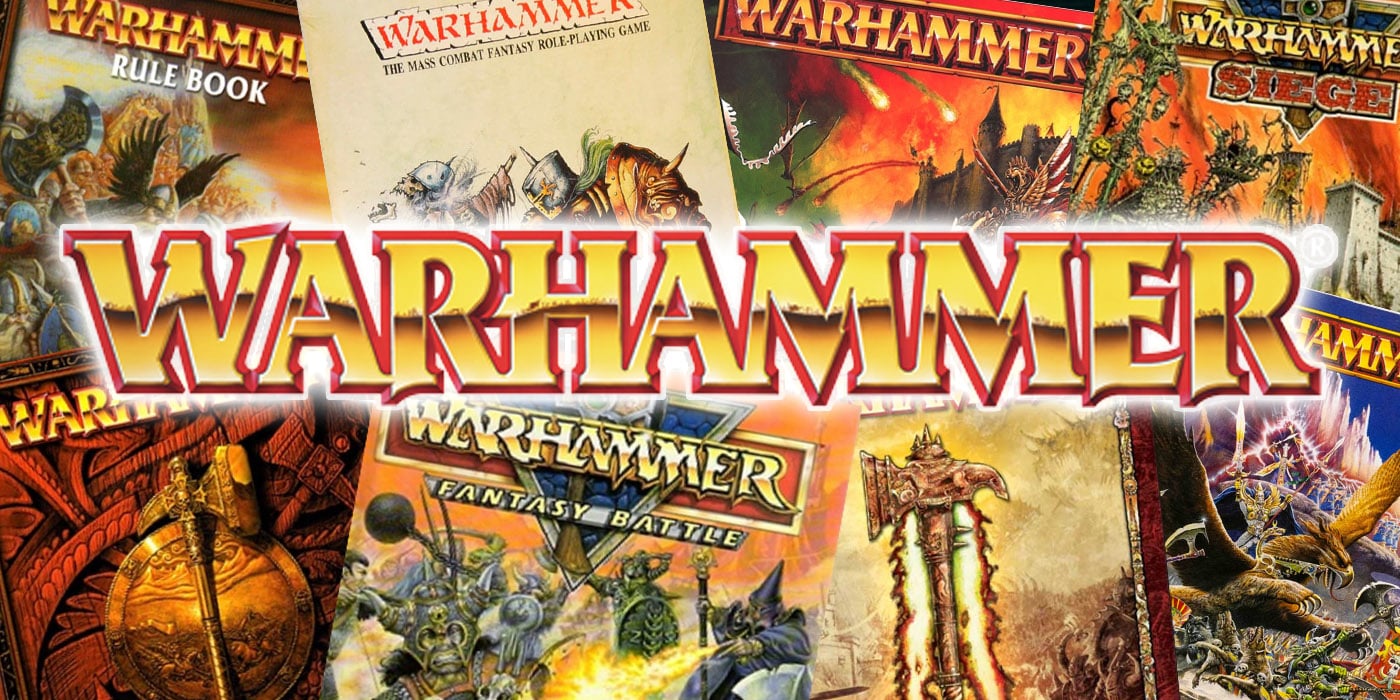
The steps to each Fantasy turn is broken into four steps…which are broken into more steps…which are… Here’s a summary to help muddle through.
It is helpful to note that although a turn appears to be fairly long when it is written out, they can go faster or slower depending on the armies on the table, as well as the player knowledge of the game and rules. Unlike other games the sequence of the turn is rather important in Fantasy and every phase has its place and the ability to affect the other phases.
Turn Sequence
Page 178 of the Rulebook is very helpful when you are just getting started with Fantasy (or if you are like me and forget which comes first Compulsory Moves or Charges), but not every single detail is listed. If you want more in depth details flip to page 12 and start from there.
 Each turn is broken into 4 phases that make up the turn for each player:
Each turn is broken into 4 phases that make up the turn for each player:
- Movement Phase
- Magic Phase
- Shooting Phase
- Close Combat Phase
- Start of Turn
- Charges
- Compulsory Moves
- Remaining Moves
What I always found irritating is that I had to remember where Animosity, Stupidity and Rally checks had to take place all on my own, but if you read page 15 it actually says “Some models have particular actions they must take at the start of the turn” and this includes Animosity and Stupidity and any other actions that are to be taken at the “Start of Turn” such as Magic Items like the Potion of Speed or the Potion of Foolhardiness that state “The…can be drunk at the start of any player’s turn.”
- You move all the charges AFTER all the charges have been declared and the reactions resolved. This is a common error made in games. Often people will charge, react then move the charge, which changes the line of sight for other units which might allow a unit to charge which otherwise would not have been able to do so.
- The order of moving your charges though does not matter, you can move them in any order you want. Keep in mind though if you move the wrong one first you might block another charge from happening. Only exception is when you have multiple units charging a unity they are moved at the same time.
- You can declare a charge reaction to every charge made. For example if I charge a unit of 18 Warriors with a unit of 20 men at arms, the Warriors are going to hold but if I further charge them with a unit of 15 Grail Knights the Warriors may decide to flee from the Grail Knights.
- You can only declare the charge reaction of “Stand and Shoot” against one unit.
- If your opponent flees from combat as a charge reaction you can try to redirect and charge a different unit.
- If you charge a unit that is already fleeing it keeps fleeing.
- Rally fleeing troops first
- Other Compulsory Moves – units that move in this phase are specified in the army book rules that their movement occurs during this phase. Such units includes things like Pump Wagons and Spawn
- You can March (move double your movement)
- If enemy models are within 8″ you must do an “Enemy Sighted” test to be allowed to March
- You can move backwards but only half your usual movement
- You can move sideways but only half your usual movement
- You cannot move sideways and backwards in the same movement phase
- You can “Reform” or “Swift Reform” to be able to change the direction you face or how wide your ranks are (Swift Reform allows you to be able to move half your Movement after you change direction)
- Reinforcements enter the table during this phase
- Winds of Magic – Roll 2D6 to tell you how many dice you get to Cast with and how many dice your Opponent gets to dispel with (add both together for yourself, opponent gets the highest of the two)
- Channel – Roll D6 for each Wizard, if you roll a 6 you get an extra dice
- Choose a spell and cast it, your opponent will then decide if they will try to dispel it (stop the spell)
- Do what the spell says to do
- Repeat
- each combat is only fought once
- battle is conducted at Initiative order
- you can only Challenge once
Check back next time for Scoring and then I will get into the other articles.



